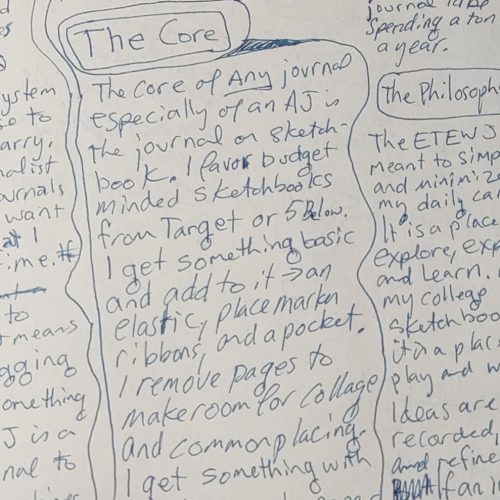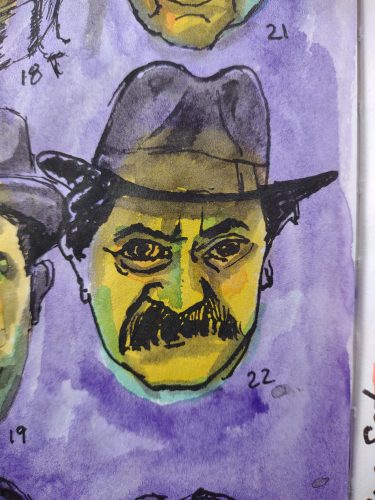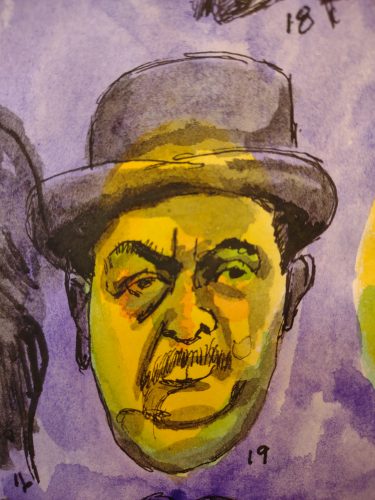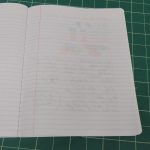I have a mere 15 pages left to my current Every Thing Every Where Journal. This is crunch time for finalizing the prep for the new journal. Luckily I started the prep when I had 100 pages left. I wrote about that already.
What I want to explore today is the final stages of a ETEW Journal and how I close out this journal and finalize the prep for the new journal. The big things are done- the cover is decorated- snazzy skulls, room made for collage, pocket and elastic added.
Now I look at what I used, what I didn’t use, what did and didn’t work, and what I need to adapt or change for this new journal. Let’s look at what did work first.
Let’s look at what did work first.
In my previous journal I made art on the right side of the book and wrote on the wrinkly left side where there was less support for the paper. I switched to prepping the left side of the spreads and writing on the right side of the spread. his worked better. Even if the paper was wrinkled, having the support of the rest of the paper and the cover flat on the work surface made a big difference in clear writing. I will continue to do this in the next ETEW Journal, I may also play around with prepared spreads as well.
Using a cheap 5Below journal has it’s limitations, light washes worked okay. It handled fountain pen ink but the paper was really too rough for my extra fine and fine nibs, and really had a rough time with the dip pen nibs. It’s great with crayons, colored pencils and other dry media. My wet washes required that I iron my pages, and that is not a step I want to do all that often. The thinness of the paper meant that occasionally ink and other wetter media would soak through. I have 2 more of theses sketchbooks to use as journals, I plan to use the next one up but I’m going to look for another brand of inexpensive journal (something on a budget) that can handle a bit more of what I do.
What did I use? I used 3 months of the planner section, plenty of EF and F nibs- I’m in love with spidery thin lines combined with fat wide lines making the images pop with contrast. 
In the new journal I’ll set up the 6 months again, because it’s important to have 6 months viewable at a time. I rarely used it but I did reference it for things like- days when work would run late and my medical appointments or days I’d need to request off of work. I used these pages to remember to request time off.
At this point I’ll transfer over the next 3 months into my planner section, I’ll make pages for post and video ideas, as well as a few pages for ideas for Less is More Healthy. I will also start my materials testing in the new journal. When I hit 5 pages left I’ll start using the new journal on the go and the old journal will stay at home on my desk, at this point it is almost too precious to leave the house, but I remind myself that it is a tool, a precious tool, but a well used tool, that only gets better and more precious with use. So I’ll force myself to wait until there are a mere 5 pages remaining.

































